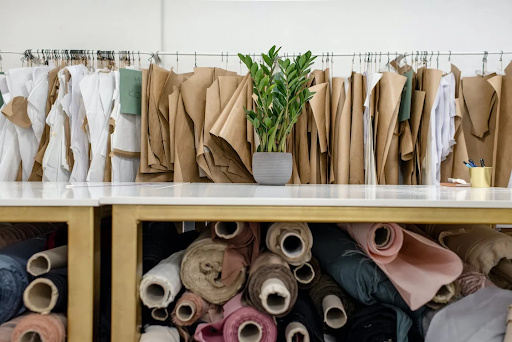Fashion’s allure often overshadows its environmental footprint, but what if style could coexist with sustainability? As landfills swell with last season’s trends, a conscious shift is emerging in the fashion world. “Green Your Wardrobe” isn’t just a catchy phrase; it’s a call to intertwine style with environmental responsibility. Dive into this guide to discover actionable steps for curating a wardrobe that doesn’t just enhance your look but also respects our planet. This can be done through green shopping and other intentional efforts. Sustainable chic is the future, and it starts with your closet.
What is Sustainable Fashion?
Sustainable fashion, also called eco-fashion, is all about creating and wearing clothes in an environmentally and socially conscious manner. This means choosing eco-friendly materials, reducing waste in production, and making sure workers get fair pay in safe conditions. It’s not just about what we wear, but how it’s made.
Additionally, sustainable fashion urges us to buy less, opt for classic styles over fleeting trends, and be mindful of a garment’s environmental footprint. The end game? Fashion that respects both nature and people, aiming for a balanced and responsible industry.
Simple Steps to Make Your Wardrobe More Eco-friendly
Amid growing concerns about environmental degradation and worker exploitation, many are turning towards sustainable fashion as a step in the right direction. But what does it mean to have a sustainable wardrobe, and how can you make that transition without breaking the bank? Here are some easy tips to help you weave sustainability into your fashion choices.
1. Educate Yourself
The first step towards any change is understanding the need for it. Read up on the environmental and social impact of the fashion industry. Knowing the amount of water used for one t-shirt or the conditions in which your clothes are made can significantly influence your next purchase.2. Start with What You Have
Before diving headfirst into buying sustainable brands:
- Assess your current wardrobe.
- Keep clothes that are versatile, in good condition, and make you feel confident.
- Remember, the most sustainable garment is the one already in your closet.
3. Quality Over Quantity
Invest in timeless pieces that will last. High-quality clothes might have a higher price tag upfront, but they tend to last longer than fast fashion items, giving you more value for your money in the long run.
4. Know Your Materials
Some materials have a lower environmental impact than others. Choose natural fibers like organic cotton, Tencel, or bamboo. These materials are generally more sustainable than synthetics like polyester.
5. Support Ethical Brands
There’s a growing number of brands committed to sustainable and ethical practices. Do your research and support them. Check for certifications like Fair Trade or Global Organic Textile Standard (GOTS) to ensure you’re making a wise choice.
6. Thrift, Swap, and Upcycle
Consider buying second-hand. Thrift shops, vintage stores, and online platforms offer a plethora of fashionable choices without the environmental impact of new production. If you’re looking for something new but want to avoid buying anything, consider hosting a clothing swap with friends. Alternatively, get creative and upcycle old pieces into something fresh.
7. Treat Your Threads Right
Pamper your pieces by washing them in cooler water, letting them air-dry, and opting for kinder detergents. This isn’t just about keeping them in top shape for longer—it’s also a nod to our planet by using less energy.
8. Think Before You Shop
Hold that credit card for a second. Visualize yourself rocking that new piece multiple times. Can’t picture it on repeat for at least 30 wears? Maybe it’s not the best addition to your wardrobe. Keeping this mantra helps you dodge fleeting fads, declutter your space, and be kinder to your finances.
9. Embrace Minimalism
The concept of capsule wardrobes, where you own a few versatile pieces that you mix and match, can drastically reduce the number of clothes you own while keeping your style relevant. The key is to find pieces that work well together and fit your lifestyle.
10. Stay Updated and Advocate
The sustainable fashion movement is dynamic, with new developments and insights emerging regularly. Stay updated, join online forums, or follow influencers who advocate for sustainable fashion. Also, use your voice: ask brands about their manufacturing processes, demand more transparency, and spread the word.
11. Mend and Repair
Don’t discard a piece of clothing because of a minor tear or missing button. Instead, learn basic sewing skills to mend your clothes or take them to a tailor. Fixing a garment not only saves you money but also prevents unnecessary waste.
12. Recycle or Donate
If you must part with a clothing item, avoid sending it to the landfill. Donate pieces in good condition to charities or drop them off at textile recycling facilities.
Wrapping Up
Incorporating sustainable fashion into your life doesn’t mean compromising on style. It means making conscious choices that respect the environment, the people who make our clothes, and our hard-earned money. It’s about finding a balance between looking good and feeling good about our choices. So, embrace the change, and soon enough, you’ll not only have a green wardrobe but a clearer conscience, too.














